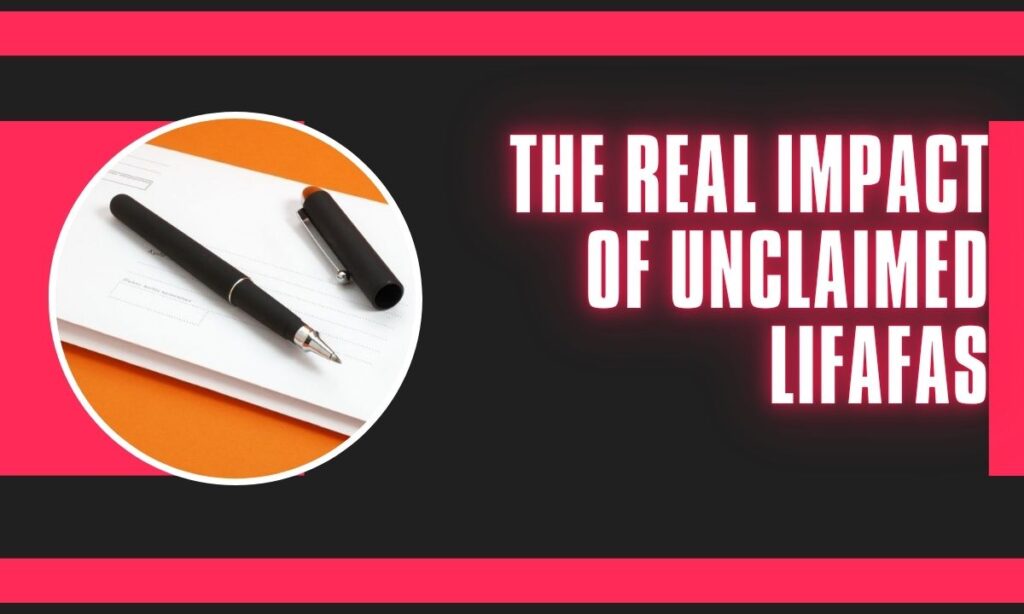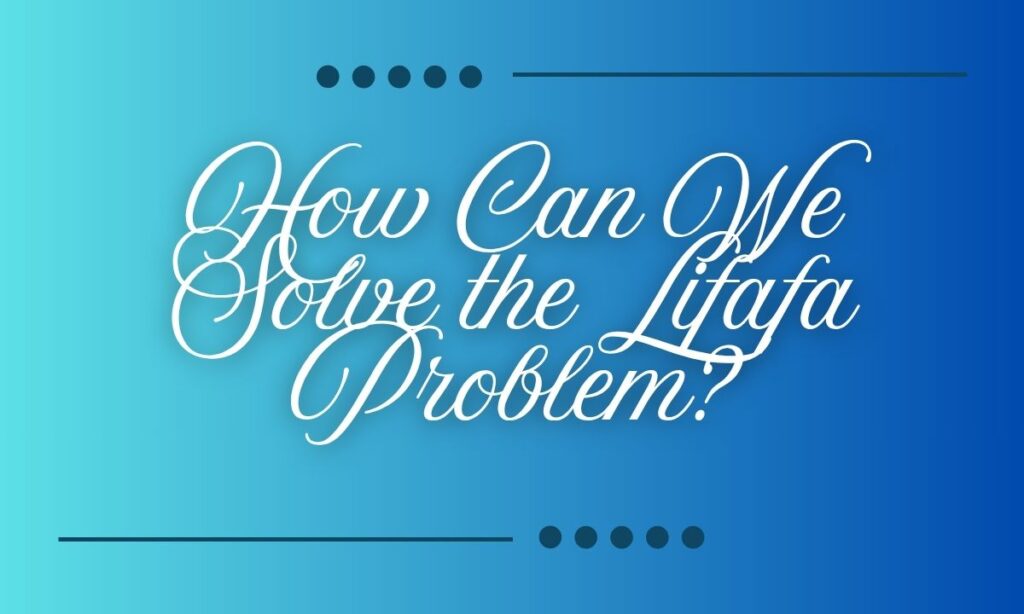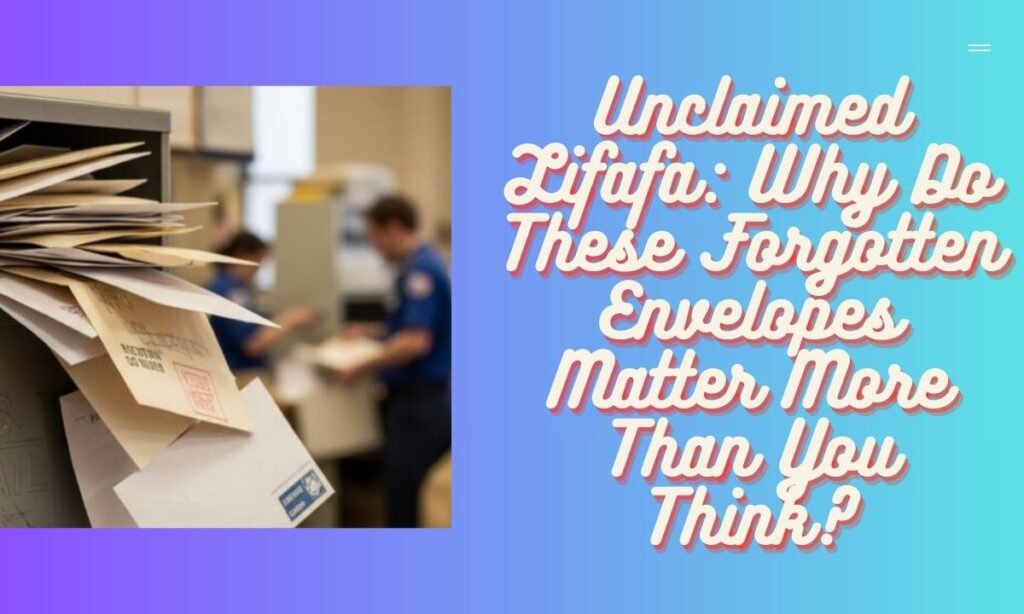In our busy lives, we often overlook small things that arrive at our doorstep. Envelopes go unnoticed. Letters pile up in corners. Documents sit in drawers gathering dust. In India, these forgotten envelopes are called “lifafas,” and they represent far more than just paper. They carry financial opportunities, important notifications, and connections to our future. The problem of unclaimed lifafas has grown significantly over the years. Many people don’t realize how much value these envelopes hold.
Some contain cheques waiting to be cashed. Others hold tax refunds that could ease financial burdens. A few might even contain life-changing news. Understanding the significance of unclaimed lifafas is essential in today’s fast-paced world. We need to recognize why they matter and what we can do about them.
What Exactly Is an Unclaimed Lifafa?
An unclaimed lifafa is much more than just an unopened envelope sitting on a shelf. It represents missed opportunities and forgotten possibilities that slip through the cracks of our daily routines. At banks, these envelopes often contain important financial documents. Cheques arrive in the mail regularly. Dividend slips show investment returns. Account statements provide crucial financial information. Customers often fail to notice these documents. They don’t check their mailboxes regularly enough. Financial information gets lost in the shuffle. Money that should be in personal accounts remains unclaimed.
Government offices send out official correspondence constantly. Pension notices arrive for retirees. Tax refunds get mailed to addresses. Grant approvals come through postal systems. These documents carry significant financial weight. Individuals overlook them without realizing the consequences. Benefits get delayed unnecessarily. Refunds remain unpaid for extended periods. People miss out on money that rightfully belongs to them.
During corporate events and community gatherings, rewards and bonuses are distributed differently. Companies hand out envelopes containing gift cards. Organizations present monetary rewards. Employers distribute performance bonuses. These gestures are meant to recognize achievement. Often they go unacknowledged amid the chaos. Recipients forget to collect them. Envelopes get left behind on tables. The recognition and appreciation intended gets lost completely.
Why Do Lifafas Go Unclaimed?
The reasons behind unclaimed lifafas are diverse and interconnected. Understanding these causes helps us develop better solutions. The problem isn’t simple or one-dimensional. Multiple factors work together to create this situation. Let’s examine each major reason carefully.
1. Administrative Errors
Administrative errors represent a surprisingly common cause of unclaimed lifafas. Small mistakes in documentation create big problems. A misspelled name on an envelope causes confusion. An incorrect address prevents delivery entirely. Wrong postal codes lead to misrouting. These tiny errors accumulate into months or years of unresolved issues.
Rightful owners never receive notifications about their money. They remain completely unaware of available funds. Institutions struggle to locate correct recipients. Records don’t match with actual addresses. The system breaks down at fundamental levels. Communication fails between organizations and individuals. People lose access to funds that belong to them legally. The emotional frustration compounds the financial loss. Recipients eventually give up trying to claim what’s theirs. Administrative errors create cascading problems throughout the system.
2. Lack of Awareness
Many people simply don’t know about their unclaimed lifafas. Modern life moves quickly and notifications get missed. Email inboxes overflow with hundreds of messages daily. Important alerts disappear among promotional content. People ignore notifications thinking they’re spam. Physical mail gets overlooked in delivery areas. Packages sit unnoticed at doorsteps for days. Online shopping has normalized frequent deliveries. Recipients can’t track what’s arriving anymore.
Communication from carriers and retailers often fails. Notifications lack clarity about what’s inside envelopes. Recipients don’t understand the importance of the content. Senders don’t emphasize urgency adequately. The disconnect between senders and receivers grows wider. People don’t realize their mailbox contains valuable items. They dismiss envelopes as unimportant junk mail. Better communication strategies are desperately needed. Organizations must improve how they notify recipients. Clear, prominent notifications could change this situation.
3. Relocation or Mobility
Constant relocation creates significant problems with unclaimed lifafas. People move frequently for employment opportunities. Career changes require geographic relocation. Families shift residences for personal reasons. Students move multiple times during their education. Urban areas experience particularly high transience rates. Apartment complexes see regular tenant turnover.
Individuals often fail to update their delivery addresses. Mail forwarding expires after limited periods. Packages sent to old addresses go unclaimed. Subsequent residents can’t locate original recipients. Organizations don’t know new contact information. Previous addresses accumulate unclaimed envelopes over time. Moving quickly without proper address updates causes problems. People forget to notify all relevant institutions. Updating addresses everywhere takes considerable effort. Some organizations lose contact information entirely. Mail handling becomes increasingly complicated. Packages end up in wrong locations consistently. This mobility issue will likely intensify as people move more frequently.
4. Procrastination or Neglect
Procrastination plays a major role in the unclaimed lifafa problem. Recipients receive notifications but delay taking action. Busy schedules prevent prompt responses. People forget about their envelopes entirely. Days turn into weeks with no action taken. Weeks become months of continued neglect. Items get deprioritized in favor of urgent matters. Picking up packages feels like low priority. Recipients tell themselves they’ll do it tomorrow. Tomorrow never comes for many people. Busy professional lives create constant distractions. Family responsibilities consume available time. Personal emergencies shift attention elsewhere.
Forgetfulness compounds the procrastination problem significantly. People remember envelopes exist but not urgent details. Lack of reminders allows memories to fade. No system exists to track unclaimed items. Individuals develop a mentality of “I’ll get to it later.” Simple neglect becomes the default response. Without external motivation, people postpone indefinitely. The combination of procrastination and neglect creates massive backlogs. Institutions struggle with increasing numbers of unclaimed envelopes. Systems become overwhelmed with accumulated items.
The Real Impact of Unclaimed Lifafas

The consequences of unclaimed lifafas extend far beyond forgotten items gathering dust. They create systemic problems affecting individuals and institutions. Understanding these impacts demonstrates why this issue demands attention.
Financial Loss
Unclaimed lifafas represent substantial financial losses for everyone involved. Individuals lose direct access to money that belongs to them. Investment returns remain unrealized and worthless. Tax refunds sit unclaimed in government systems. Pension payments accumulate in escrow accounts. Bonuses and rewards never reach intended recipients. The total financial loss across society reaches significant levels annually. Many people remain completely unaware of their missing funds.
Institutions also suffer financial consequences from these unclaimed assets. Banks must maintain accounts with dormant status. Government agencies allocate resources to manage unclaimed funds. Organizations track items with no clear recipients. Administrative costs mount as years pass. Money sits unused in various institutional accounts. Economic growth potential gets lost. These funds could circulate through the economy. Investments could grow and multiply. Individuals could use these resources for meaningful purposes. Instead, everything remains frozen in limbo. The opportunity cost to society proves considerable and measurable.
Administrative Burden
Organizations face tremendous administrative burdens managing unclaimed lifafas. Tracking systems must maintain extensive records of every item. Staff time gets consumed managing these envelopes. Resources divert from core institutional missions. Record-keeping compliance becomes increasingly complex. Legal requirements demand careful documentation. Multiple copies must be maintained for reference. Digital systems require ongoing updates and maintenance. Physical storage consumes valuable office space.
The administrative work becomes more difficult over time. Items accumulate faster than institutions can process them. Outdated information requires correction and updating. Finding recipients becomes nearly impossible after several years. Institutions must comply with various regulatory requirements. Different jurisdictions have different rules. Federal, state, and local regulations all apply. Compliance efforts multiply across different departments. Staff training becomes necessary and ongoing. Quality assurance systems must verify accuracy. The burden grows exponentially with each passing year.
Legal and Ethical Concerns
Legal and ethical issues arise when institutions mishandle unclaimed assets. Trust gets damaged when people lose access to their money. Public confidence in systems declines significantly. Questions arise about how funds are managed. Transparency becomes crucial but often lacking. Institutions may face legal liability for mishandled assets. Regulations exist that institutions sometimes violate. Penalties and fines can result from non-compliance. Class action lawsuits may be filed against organizations. Ethical concerns grow as individuals lose their funds.
Exploitation risks increase when people don’t know about their assets. Vulnerable populations suffer disproportionately from lost funds. Poverty cycles perpetuate when financial resources remain inaccessible. Injustice occurs when institutional failures harm individuals. Trust in financial systems erodes with each unclaimed incident. Public confidence in government agencies declines. Relationships between institutions and citizens deteriorate. Long-term damage to institutional credibility results. Addressing these legal and ethical concerns requires fundamental reforms.
How Can We Solve the Lifafa Problem?

Solving the unclaimed lifafa problem requires comprehensive, multifaceted approaches. Technology must combine with community engagement. Innovation needs to address root causes. Solutions must be practical and implementable. Let’s explore specific strategies that can create real change.
Digital Notifications
Digital notification systems can transform how we address unclaimed lifafas. Timely alerts inform residents about their envelopes. Automated messages can reach people through multiple channels. Email notifications provide formal documentation. Text messages offer immediate attention-grabbing updates. Mobile app notifications integrate seamlessly with daily routines. Push notifications arrive at optimal times. Recipients can acknowledge receipt and confirm collection. Tracking systems monitor notification delivery rates. Analytics reveal which communication methods work best. Customizable preferences allow people to choose their notification style.
These systems must be designed with user experience in mind. Notifications should be clear and easy to understand. Important information must stand out prominently. Instructions for collecting envelopes should be straightforward. Multiple reminder notifications can reduce procrastination. Escalating urgency can encourage prompt action. Deadlines create motivation for timely responses. Personalization increases engagement significantly. Recipients should receive relevant information tailored to their situation. Previous communication history can inform future messaging. Successful notification systems adapt to user feedback continuously.
Centralized Collection Points
Centralized collection points simplify the process of retrieving unclaimed lifafas. Single locations eliminate confusion about where to go. Residents can access services without navigating multiple agencies. Convenient hours accommodate working schedules. Weekend availability serves people with limited free time. Online portals allow virtual access and information retrieval. Digital interfaces reduce the need for physical visits. Staff at collection points can provide assistance and guidance. Personnel answer questions about unclaimed items. Verification processes can confirm identity and ownership. Same-day retrieval becomes possible at many locations.
These hubs serve communities as comprehensive service centers. Multiple agencies collaborate from single locations. Banks, government offices, and corporate representatives coordinate efforts. Citizens receive comprehensive support in one visit. Travel time and inconvenience decrease substantially. Accessibility improves for elderly and disabled individuals. Transportation barriers get reduced significantly. Parking availability increases convenience. Service quality improves through collaboration. Shared resources benefit all participating organizations. Communities benefit from improved service delivery. This approach creates efficiency and eliminates duplication.
Public Awareness Campaigns
Public awareness campaigns educate people about unclaimed lifafas. Educational messages highlight the importance of these envelopes. Campaigns explain how to locate and claim items. Success stories inspire people to take action. Testimonials from successful claimants provide motivation. Media coverage amplifies awareness widely. Television commercials reach mass audiences. Radio spots target commuters and workers. Print advertisements reach local communities. Social media campaigns engage younger demographics. Digital platforms offer interactive educational content.
Campaigns must target specific populations facing highest unclaimed rates. Messages should address particular causes like relocation or administrative errors. Information should be available in multiple languages. Accessibility requires various communication formats. Visual designs should be clear and compelling. Messages need to be memorable and shareable. Calls to action should be specific and direct. Contact information should be prominently displayed. Resources should be free and readily available. Follow-up support should assist people through the process. Sustained campaigns create lasting behavioral change.
Automation and Tracking
Automation and tracking systems dramatically improve efficiency. Data analytics identify patterns in unclaimed items. Technology processes work faster than manual methods. Algorithms match recipients with their envelopes. Machine learning improves accuracy over time. Automated systems reduce human error significantly. Digital records eliminate paper-based inefficiencies. Real-time tracking shows status of every item. Notifications alert people when items arrive. Automated matching speeds up identification processes. Efficiency gains allow staff to focus on complex issues.
These systems require significant initial investment but pay dividends long-term. Infrastructure must be robust and reliable. Security measures protect sensitive personal information. Systems must integrate with existing institutional databases. Compatibility ensures smooth operations across organizations. Regular maintenance keeps systems functioning properly. Updates adapt to changing needs and regulations. Staff training ensures proper system usage. Quality assurance verifies accuracy consistently. Performance monitoring identifies improvement opportunities. Continuous refinement optimizes outcomes progressively.
Real-Life Examples: How It’s Being Tackled
Corporate Scenario
Major corporations are implementing innovative approaches to unclaimed asset problems. Unilever developed comprehensive tracking systems for customer communications. Their programs ensure important notifications reach intended recipients. Automated verification confirms delivery and receipt. Follow-up protocols ensure customers take action promptly. Success rates have improved substantially through these efforts. Employee benefits programs have adapted similarly. Notification systems alert workers about available benefits. Centralized benefit administration simplifies access. Digital platforms allow employees to manage benefits online. Claim rates have increased significantly through these improvements.
Google revolutionized employee engagement around important matters. Digital platforms provide clear information and guidance. Reminders appear at strategic intervals throughout year. User-friendly interfaces make processes simple and intuitive. Support staff answer questions and provide assistance. Mobile apps allow access anytime and anywhere. Analytics track participation and identify barriers. Continuous improvements address user feedback. Success metrics demonstrate program effectiveness. Other companies observe and adopt these successful models. The corporate approach emphasizes user experience and convenience.
Government Example
Copenhagen implemented innovative systems for citizen communication. Official notifications now reach residents through multiple channels. Digital platforms provide centralized access to information. Staff availability ensures people can get assistance. Tracking systems monitor item delivery and collection. Success rates improved dramatically within the first year. Other cities adopted similar approaches. Government agencies collaborated on unified systems. Data sharing eliminates duplication of efforts. Efficiency gains freed resources for other priorities. Citizens experienced improved service quality measurably. Government trust metrics improved in surveys.
Several state governments in India launched pilot programs for unclaimed documents. Centralized portals allow citizens to search for available items. Digital verification confirms ownership and eligibility. Online claims processing eliminates paperwork. Direct deposit transfers funds to specified accounts. Collection points reduce need for central locations. Mobile teams visit remote areas regularly. Multilingual support serves diverse populations. Initial results show dramatic improvement in claim rates. Plans include nationwide expansion soon. These programs demonstrate government commitment to solving this problem.
Social and Cultural Angles
Community-based organizations take grassroots approaches to unclaimed lifafas. Volunteer networks identify people at risk of losing funds. Education programs teach the importance of claiming benefits. Support groups help vulnerable populations navigate systems. Trust-building efforts address skepticism about institutions. Cultural sensitivity ensures respectful community engagement. Local leaders participate in awareness campaigns. Religious organizations amplify important messages. Community centers become access points for assistance. Success stories spread through word-of-mouth networks. Cultural initiatives celebrate people who successfully claim benefits. Community pride grows around collective problem-solving.
NGOs partner with the government to expand reach to marginalized communities. Door-to-door campaigns identify unclaimed items. Assistance with documentation removes significant barriers. Language support serves non-English speakers. Dedicated staff provide personalized help. Transportation assistance brings services to underserved areas. Advocacy addresses systemic issues causing problems. Policy recommendations reach government agencies. Research documents the effectiveness of different interventions. Funding supports ongoing program expansion. Impact assessments demonstrate clear benefits to communities. Stakeholder collaboration strengthens overall efforts.
Frequently Asked Questions
What exactly should I do if I discover an unclaimed lifafa?
Contact the issuing organization immediately with proof of identity. Visit centralized collection points or authorized locations. Complete required claim forms with accurate information. Provide documentation supporting your claim.
How long can institutions hold onto unclaimed lifafas?
Regulations vary by jurisdiction and item type. Generally, funds may be held for three to seven years. After that period, laws may require transfer to government accounts. Check specific regulations in your location.
Can someone else claim my unclaimed lifafa for me?
Most institutions require the rightful owner to claim items personally. Power of attorney documents may allow authorized representatives in some cases. Generally, identity verification with original documents is required for direct claims.
How do I know if I have an unclaimed lifafa waiting?
Check official institution websites for unclaimed property searches. Contact banks, employers, and government agencies directly. Register with centralized databases in your region. Review old mail and documents from previous addresses.
What information do I need to claim an unclaimed lifafa?
Bring valid government-issued identification proof. Gather original documents related to the item if possible. Provide address history if you’ve relocated. Collect account numbers or reference codes from correspondence.
Conclusion
Unclaimed lifafabs represent more than just forgotten envelopes gathering dust in offices and homes. They symbolize missed opportunities, lost connections, and systemic failures that affect millions of people. The financial impact alone justifies urgent attention and action. Beyond money, these envelopes carry emotional weight and importance to individuals seeking their benefits and recognition.
The problem persists because multiple factors work together to create barriers. Administrative errors, lack of awareness, relocation, and procrastination combine to overwhelming effect. No single solution can address this complex issue entirely. Comprehensive approaches combining technology, policy, and community engagement offer the best hope for progress.






